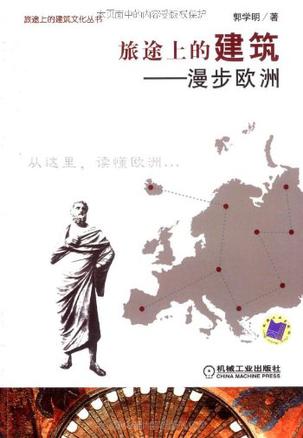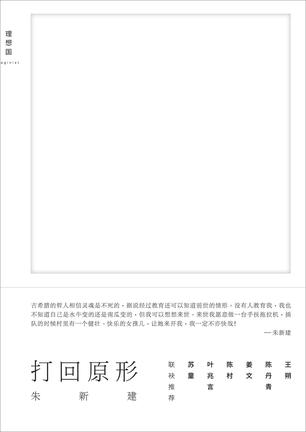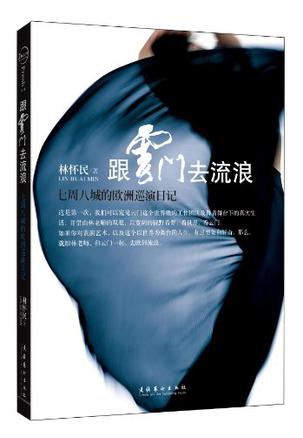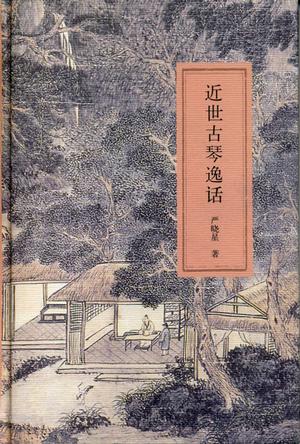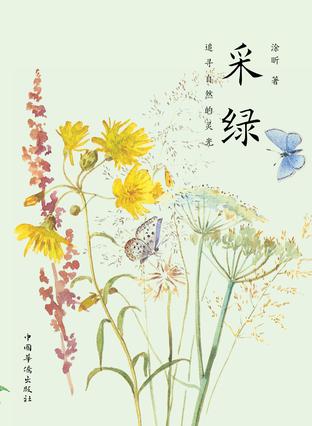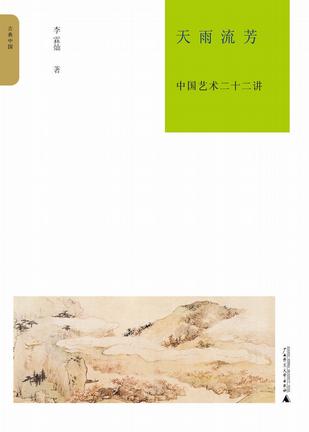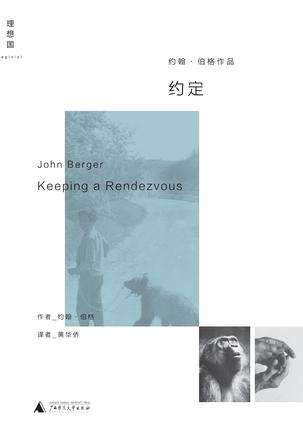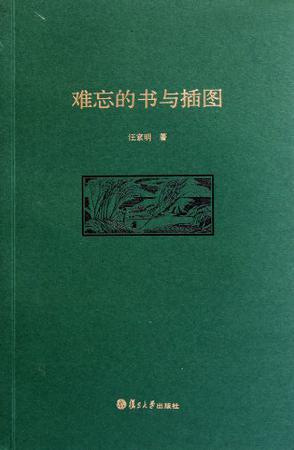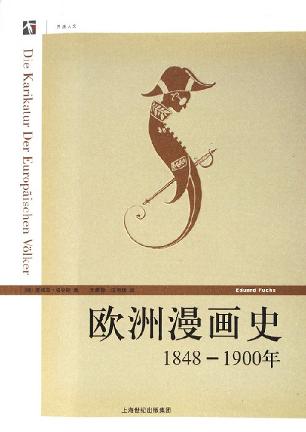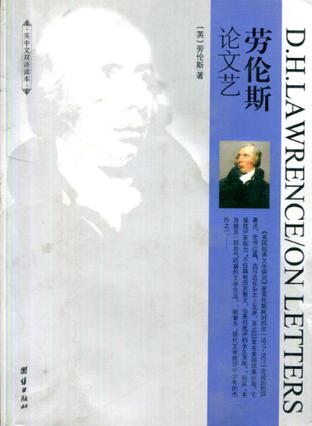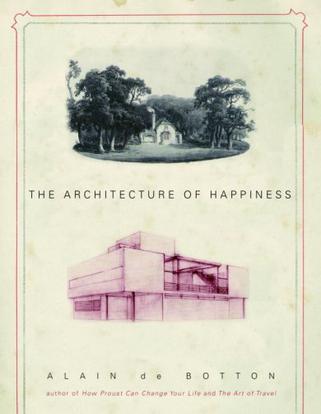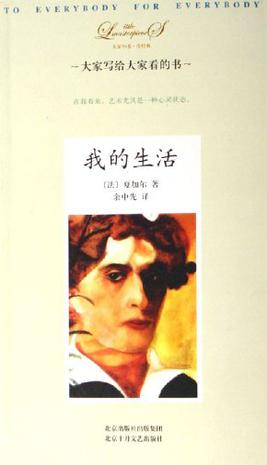欢迎来到相识电子书!
标签:艺术
-
室内静物·窗外风景
★旅法作家尉任之——台北长大,巴黎安家,走遍天下 作家,画家,摄影师 / 《印刻文学生活志》《万象》专栏作家 ★平凡的风景和静物,因为人的凝视,有了不同的意义。 ★年纪渐长,我才发现艺术创作中最动人的部分其实是过程,而不是答案。 ★著名作家章诒和推荐—— 尉任之的处女作《室内静物•窗外风景》,看完后的第一感受就是嫉妒!他读大学以来,就自 己画画,看电影,听音乐,独自旅行,读文学作品,然后落脚巴黎。之后用横穿哲学,文学,绘画,音乐,电影等领域的方法写作,谈人,谈事,谈景。独特亦独到。最喜欢他写格鲁吉亚,高加索的文章,看罢惊讶莫名! ================================================================= 本书是旅法作家尉任之的艺术生活随笔集。全书分五辑:静物,风景,肖像,随笔,游记。从绘画艺术和艺术家,写到音乐艺术和艺术家,再到电影和导演,文学和作家,也并非写什么只写什么,而是随着体验的走向,时而绘画连接到音乐,或者导演 、钢琴家本身就是诗人,这样的转换与连接,使我们仰望的艺术,化为个人的生活经历、艺术体验,震撼每个人的内心。 年纪渐长,我才发现艺术创作中最动人的部分其实是过程,而不是答案。 当前华文美学评论中,尉任之是最优秀的作者。——李渝 任之此书涉猎极广,文学、美术、音乐、电影、新兴国族文化,无一不饱,又层层互扣,互为激荡;对于行将逝去的“老灵魂”,这些文字都是需要细细咀嚼才能体会的精粹。——郑树森 -
旅途上的建筑
《旅途上的建筑:漫步欧洲》讲述了:写建筑的书往往容易被数字和术语扼杀了可读性,也淹没了思想性。这是一本轻松有趣味的书,一本把欧洲建筑写活了的书,一本有着思想深度和艺术品味的书,轻松并不意味着肤浅。作者用简洁平实的语言辅以精美的图片脉络清晰地阐明了欧洲经典建筑的艺术特征、技术特点和历史背景,以及欧洲建筑史的形成和发展过程。同时介绍了欧洲建筑艺术、建筑风格、建筑结构与建筑材料的基本知识,以及这些建筑所承载的文化内涵,讲述了围绕这些建筑发生的故事,也自然而然的介绍了与建筑相关的历史、文化和宗教知识。《旅途上的建筑:漫步欧洲》适合于建筑业从业人员及相关专业的师生,更适合于对建筑、历史和文化感兴趣的大众读者。 -
打回原形
朱新建刻过一枚闲章,“打回原形”,这次拿来用作书名,因相对于他的画而言,这些文字应该算是某种形式上的原形,或深或浅地折射出一些画里未尽的意思。近三十万字,收录了朱新建这辈子散落在各处的话语,有关千年画史,文人往事,古今中外,世事纷呈;有精妙通透的阐释,亦有零零落落的碎语,却都是掏心窝子的实话。或深或浅,或隐或白,都是他的性情与风流。 ◎ 焦点推荐 朱新建身前也是个爱热闹的,画家嘛,家里总是人来人往,跟集市似的。但到最后,总归要自己面对自己。 ——王朔 回看新建的作品,我想起费舍尔对罗丹的带有嫉妒之心的敬意。 ——陈丹青 我觉得一个弄文字的人弄出来的文字也没他好看。 ——陈村 武侠小说中有一种境界,叫独孤求败,朱新建心里怎么想的,我不知道,想来也是去之不远。 ——叶兆言 去冬朱爷羽化,眼看就要一年。多次梦见他痊愈,坐在副驾驶的位子上,回过头来和我讲笑话。有次实在太真,我醒来很久,还在琢磨天亮了,要打圈电话给村长老费江芮报喜。慢慢回过神来,想我们这位爷,吃饭走路,从不等人,脾气急得很,所以这一走,也是不等你们,一个人自在玩耍去也的意思。 ——郁俊 相对于他的画而言,这些文字应该算是他某种形式上的原形,或深或浅地折射出一些画里未尽的意思。 ——朱砂 -
管风琴手记
本书是马慧元继音乐随笔集《北方人的巴赫》之后的又一部音乐随笔,是作者关于管风琴的音乐和生活札记。谈巴赫、谈管风琴、谈古典音乐…… 她以自己多年弹奏钢琴、管风琴的体会和对管风琴音乐的独到认识,勾勒出管风琴音乐的独特之美,以优美的文字记录下对文艺复兴到巴赫时期古典的音乐的真切感受,温厚安静,孤迥悠远…… -
跟云门去流浪
“传统文化,不管是民间故事、文学经典,或书法美学都是我的眷恋。” 云门的舞者很习惯奔波,仿佛舞者的生涯就是一出“流浪者之歌”。 去年的欧洲巡演过程中,老师每天写日记,记录幕后的点点滴滴。 这是第一次,我们可以窥见云门这个世界级的工作团队及舞者舞台下的真实生活,了解云门舞蹈之所以精彩的原因;并且借由老师的双眼,以一种宽阔的视野看舞,看世界,看云门。读者读到舞,也读到了旅途中的风景。 “希望这本书让大家对于这个‘逐水草而居’的行业,能够多一点认识。” 如果你对表演艺术,以及这个以世界为舞台的人生,有过想象和好奇,那么,就跟林老师,和云门一起,去欧洲流浪。 -
近世古琴逸话
从十九世纪八十年代《碣石调·幽兰》回归中土、到二十世纪末的两个甲子之间,中国的古琴艺术在时代大潮中,也面临着千年未有之大变局。这也是与当代古琴界血脉相连、为所有琴人所熟悉的历史阶段。本书讲述的就是这一百二十年间琴坛的轶闻趣事,涉及琴人一百五十余位,不仅包含了九十多篇掌故,还选配了近八十张图片,其中不乏首次正式面世的珍品。通过这些文字和图像,既重温历史,也开阔眼界和心灵。 本书用传统的笔记体裁进行撰写,却兼顾了内容的严谨。在每篇掌故之后,都注明了依据的文献出处;在全书之后,都列出了征引、参考书目及版权信息。此外,本书还特地作“人名索引”,方便读者查找;对书中涉及到的主要人物,还一一写出小传,便于读者理解。因此,一般读者固然可在本书中饶有兴味地看故事,关心古琴文化与艺术的读者却更可看到历史,看到人生,看到前辈的风范。 给古琴界编这么一本掌故书,是有史以来的第一本。书中多是有趣的故事,并不涉及专门的学问,但又与专门的学问多少有点关系。对读者而言,可以看故事,可以尝趣味,懂琴的,不懂琴的,都可以看。通过书中揭示的近世文人与古琴的纠结来聆听传统中国文化的遗响,则是更有深意的事。书中另有许多难得一见的插图,有人物,也有实物,不但可以增益阅读之趣,本身也很有史料价值。 -
采绿
必须想象自然事物的“灵光”。——瓦尔特·本雅明 国内第一本全面、细致、系统的城市自然笔记 12个月美妙文字记录,545张牵动人心的自然精灵摄影 采撷每一个人身边最朴素、最日常的博物生活之诗 “如果你要问我,盛夏之美的极致凝于何处,我会毫不犹豫告诉你,是凤蝶在你耳边划过的风;还有它们的翅膀洒在石板路上时闪时现、或肥或瘦的灰色碎影。” 这是一本城市自然笔记,每一页都有花朵与生灵飘然而出。作者用两年多时间,记下身边每一季草木的开花与结果,昆虫的踪迹,鸟儿清晨彩色的歌声,午后蝴蝶翅膀掀起的空气,追寻着自然世界里凝结的片刻灵光。涂昕笔下的文字,正如她的豆瓣网名“热带植物”,浓郁、热情而明亮,带着草木勃发的气息,还有对自然最纤微细致处的温柔回应。 更难得的是,这不仅仅是一份十二个月的自然观察,还描述了许多对自然有独特感受的作家,一些“通晓植物灵魂”的人:普里什文、纳博科夫、梭罗、沈从文…… -
外国文学插图精鉴
本书收集发约200部外国文学作品中的2000余幅插图.文学作品跨度从古动脉的<亡灵书>,到20世纪海明威的<老人与海>,种类有小说,诗歌.戏剧;插图的种类有油画,版画,素描等,包括众多大师级的画家为名著所作的精美插图.主编李文俊先生洋洋三万字的序言<精美如绣五彩俱备>,将插图艺术的历史沿革作了生动描述,经纬交织,为读者展示出世界插图艺术的全景图. -
论摄影
《论摄影》不仅是一本论述摄影者的经典著作,而且是一本论述广泛意义上的现代文化的经典著作。它不是一本专业著作,书中也没有多少摄影术语,尽管有志于摄影者,应人手一册。它的对象主要是知识分子、作家和文化人。 桑塔格深入探讨摄影的本质,包括摄影是不是艺术,摄影与绘画的相互影响,摄影与真实世界的关系,摄影的捕食性和侵略性。摄影表面上是反映现实,但实际上摄影影像自成一个世界,一个影像世界,企图取代真实世界。 对读者而言,这本书的丰富性和深刻性不在于桑塔格得出什么结论,而在于她的论述过程和解剖方法。这是一种抽丝剥茧的论述,一种冷静而锋利的解剖。精彩纷呈,使人目不暇接。桑塔格一向以庄严的文体著称,但她的挖苦和讽刺在这本著作中亦得到了充分的发挥。 《论摄影》出版于一九七七年,轰动一时,引起广泛的讨论,并荣获当年的全国图书批评界奖,至今仍被誉为“摄影界的《圣经》”。 本版配以60余幅世界摄影史上的珍贵照片,推出极具艺术品位与收藏价值的“插图珍藏本”,使《论摄影》真正成为图文并茂的文化经典。 -
天雨流芳
“天雨流芳”,此四字原是汉语,意为天降润雨,滋生万物,但如以纳西语发音,其意思却是“去看书吧”。本书集结了李霖灿先生多年涵泳艺术天地的系列文章,他以四十年老博物馆员的体验从中国文化中汲取智能,以图文并茂深入浅出的方式,讨论了中国艺术史研究中最主要的几个类门,包括绘画、书法、陶瓷、雕塑以及云南么些族的生死观。借由“体物言志”的方式,向读者揭示生活与处世的态度,在书中,作者不仅循循善诱地引导读者如何欣赏一件艺术品,并且随时提醒大家:生活之中无处不蕴藏着艺术之美。 -
约定
编辑推荐 本雅明、苏珊•桑塔格之后最具魅力的艺术写作。苏珊•桑塔格将约翰•伯格奉为当代英语作家之翘楚,梁文道亦称约翰•伯格在几个领域都是不可不读的大家,本书即是了解约翰•伯格最直接深入的一本文集,约翰•伯格诗般语言和深情写作在这里得到了淋漓尽致的表现,能够引起读者最大的共鸣,正如约翰•伯格在“致读者”中所说,这本文集“唤起了对相会之地的回忆”,读者会情不自禁地说:我以前来过这里。 内容简介 我去过很多地方。我活过一些年头。现在,我把那些关于信守约定的故事,编述一集。每段叙述都从一幅图像开始,这些图像唤起了对相会之地的回忆。有些地方可能难以在地图上找到,另外一些或许可以。当然,所有这些地方,都曾为其他旅行者探访过。我希望,读者也会情不自禁地说:我以前来过这里…… ——约翰•伯格 本书的每篇文章以一张图片引导,在这些文章中,约翰•伯格不仅分析图像本身,更重要的是,他深入观看背后的思考与读者在时空全域的探究相遇,从而文字的如晤变成如约而至的照面。通过这些视角独到的文章,我们得以全面领略约翰•伯格为我们所呈现的世界,进而有可能去探索波洛克和透纳作品中的主题,去穷尽巴黎的神奇,去思考人性的多种可能。这样的相会是多方面的:介于艺术与批评、艺术家与主题、煊赫与无名。而本书最重要的,是建立了作者与读者之间通过回忆与经验相会的契机。 名人推荐 我尊崇并热爱约翰•伯格的作品。他为世间真正重要之事写作,而非随性所至。在当代英语作家中,我奉他为翘楚;自劳伦斯以来,再无人像伯格这般关注感觉世界,并赋之以良心的紧迫性。他是一位杰出的艺术家与思想者。论诗意,他或许稍逊劳伦斯;但他更机敏、更关注公共价值,风度气节亦胜一筹。他是一位杰出的艺术家与思想者。 ——苏珊•桑塔格 他不倦的窥探并非仅仅指向摄影与绘画,而是“观看”的诡谲。在我们可能涉及的有关观看的文献中,很难找到如此引人入胜的文字,这些文字有效化解了古典绘画被专业史论设置的高贵藩篱,也使照片摆脱过多的影像理论,还原为亲切的视觉读物。阅读伯格,会随时触动读者内心极为相似的诧异与经验,并使我们的同情心提升为良知。 ——陈丹青 撇开意识形态立场不谈,伯格目前在几个领域里都是不可不读的大家。例如艺术理论和艺术史,你能不看《观看之道》和《毕加索的成败》吗?假如你研究摄影,你能不读他的《另一种讲述的方式》吗?假如你喜欢当代英语文学,你一定会在主要的书评刊物读到其他人评介他的新小说。更妙的是,他随便写一篇谈动物的文章,也被人认为是新兴的文化研究领域“动物研究”的奠基文献之一。综合起来看,他就和苏珊•桑塔格一样,是那种最有原创力也最有影响力的公共知识分子;虽然不在学院,也不按学院的格式写作,却创造出了很多名牌大学教授一辈子也弄不出来的观念。而且他还要写得那么美,拥有那么多读者。反过来说,今天我们中国也很流行讲“公共知识分子”,但很惭愧,我们似乎还没有人及得上伯格这一流,还没有谁会有这样的知识上的创造力。 ——梁文道 -
难忘的书与插图
《难忘的书与插图》跋 褚钰泉 大半辈子与书与出版界打交道:参与创办并主持了《文汇读书周报》十六七年,继而又负责杂志书《悦读》……翻开通讯录和名片册,交往过的出版界朋友何止千百。可是,深刻留在记忆中的却屈指可数,汪家明先生是其中的一位。 汪家明先生是最早提出图文书出版理念并付诸实践、取得成绩的一位出版人。他创办的《老照片》和提出的一系列有关图文出版的观念,不仅使他领导的山东画报出版社摆脱亏损的困境,在全国出版界声誉鹊起;而且引发了“读图时代”的到来,开启了新一轮图书出版的时尚。他嗜书如命,知识面广,能文,懂画,是一个难得的编辑人才。调至生活·读书·新知三联书店后,繁重的工作压力,使他的编辑才华未能充分发挥。汪家明先生对书籍的装帧艺术和插图情有独钟,早在青少年时代就注意收集、积累和把玩,步入中年后依然乐此不疲。我负责《悦读》后,曾多次动员他提起笔来,写点心得体会,他都因编务缠身,无法实现。经我一再催促,他终于答应在《悦读》上开辟一个谈书与插图的专栏。文章图文并茂,博得读者广泛好评。他也就一发而不可收。 几个月前,偶遇复旦大学出版社社长贺圣遂先生,他正在考虑出版一批精美的图书,以纪念该社诞生三十周年。我提起汪家明先生有关书与插图的文章,贺先生甚感兴趣,说如能结集出版,定是本好书!这本《难忘的书与插图》就此诞生。 读样稿时,字里行间仿佛又见到汪家明先生忙里偷闲选画撰文的身影,几位神交已久的出版界能人宁成春、张立宪、蔡立国等精心编辑、设计、制作,贺圣遂先生的热情支持,使这本精美的图文书,洋溢着浓浓的友情。 -
诗人与画家
目录: 灾难中的宁静黄昏——论凡高 论诗歌与绘画,兼及对音乐的一点思考 艺术与思想 巴尔蒂斯 宏大目标与费尔南·莱热 诗歌与绘画的关系 旋涡主义 尊重事物本身 作为作家的画家 作为画家的诗人 “罗丹”的碎片 劳伦斯论绘画 …… -
欧洲漫画史
漫画在文化史和艺术史上占有重要的地位。但更重要的是它从一个重要的侧面放映了历史的真相。本书作者有意把漫画作为文化现象考察,因而把主要着眼点放在其十九世纪下半叶的踪迹之上,这是欧洲文化出现重大发展的时期,而其主要的国家则是德国、法国、英国和俄国,另外对比利时、荷兰、意大利和瑞等国的漫画,作者也用一章的篇幅综合评述。本书为1906年出版,515幅插图和65幅插页,均为黑白或彩色艺术珍品,放在开放人文的系列丛书中。本书最早于1906年在德国出版,作者爱德华·福克斯有意把漫画当作文化现象考察。以1848年为界,他将《欧洲漫画史》分为两卷本出版。本卷的主要着眼点放在19世纪下半叶(1848一1900年),而这正是欧洲文化出现重大发展的时期。近600幅漫画,生动地勾勒出欧洲历史文化变迁的轨迹。而作者渊博雅致又略带冷幽默的论述更是点睛之笔。书中约一半的漫画是作者从19世纪欧洲各国约6O0多种刊物中精选而来。更多的素材来自德国、荷兰、比利时、英国、法国瑞士、意大利、奧地利的城乡各地的旧货摊、旧书店、私人收藏者。全书共有515幅插图和65幅插页,不仅是黑白或彩色的艺术珍品,更是社会史、风俗史的绝好材料,它们的意义已经远不局限在艺术万面。 -
劳伦斯论文艺
劳伦斯是英国小说家、诗人、戏剧家和画家,1928年私人出版了最有争议的最后一部长篇小说《查太莱夫人的情人》,但英美等国直到60年代初才解除对此书的禁令。1930年3月2日劳伦斯因患肺结核死于法国尼斯附近的旺斯镇,骨灰安葬在美国新墨西哥州的一个农场。劳伦斯是20世纪英国文学史上最独特、最有争议的作家,,他认为小说是人类表达思想感情方式中的最高形式,认为“艺术的使命在于揭示人与周围世界的关系”。他敢于打破传统方式,以其独特的风格揭示人性中的本能力量,召唤人们从资产阶级文明的灰烬中重建现代社会,本书是他与众不同的文艺观。 劳伦斯崇尚生命与爱情、幸福与自由,他的文艺论写得畅达飞扬,狂放洒脱,人木三分。字里行间,洋溢着“浪漫主义作家”桀骜不驯的生命激情 …… 他不以“文艺批评”为“科学”,他所关心的,正是“科学”所冷落的那些价值:不管“科学”如何号称高明,人之“内心情感”永远有它自己的 “秘密场所”,有它自己的“天地”;文学的灵魂似乎永远与“科学”背道而驰;他喜爱山花野树而不是城市的喧嚣,他以为这太过。智力与理性”的社会,已经把人类的“感情与血性”大大地牺牲了…… -
竹谱详录
古言竹者或有谱无画,或有画无谱,为李衎《竹谱详录》开有谱有画之先河,且论述极详,是古代竹谱中具有代表性的著作。全书分画竹、墨竹、竹态、竹品四谱,七卷,尤详于竹品谱。描述了我国三百余种竹类,包括各种罕见竹类,对于其形态、品性、画法均有详细论述。作者征引繁复,其中很多古籍现已亡佚,对于古典文献的研究亦有一定的参考价值。 阴阳五行之气有清有浊。人之生,得其气之清者必清,而浊者莫干焉;得其气之浊者则所好必浊,而清者莫混焉。夫清之不能以浊,浊之不能以清者,岂日严封畛以限之,高闩闳以绝之哉!薰莸冰炭相反而不可相入,固自然之理也。蓟丘李侯仲宾,海内清流,以“息”名其斋居之室,于世味一切淡如,顾独喜为墨竹。读书余闲,辄游戏于是。久之,遂尽得文湖州不传之秘。尝为一书,论墨竹之法与其病,凡竹之异俗殊名,奇形诡状,莫不谱其所自出,古今诗文有一语及竹者,亦皆摭掎无遗。其好之可为笃矣。夫竹,天下至清之物也,非沆瀣之清素在脾肝间与此君分合,安能好之如此其笃,又安能使风枝露叶萧洒劲严,无一毫尘俗气,若涤笔于冰盂雪碗中而写之耶?抑竹之所以可贵者不特清而已,盖贯四时而不改柯易叶,有不可夺之节焉。侯尝以春官贰卿万里使北景能不辱命而返,其大节之不可夺盖如此。昔白乐天谓竹有似于贤者,世以为名言,若侯者真可比德于竹而无愧矣! -
视觉心理学
人类的想象世界一部分脱离了真实世界,而这一部分形式与现实世界形式的作用恰好相反,它使我们看到了艺术的力量.本书就是论述这股力量产生的原因. -
The Architecture of Happiness
From Publishers Weekly With this entertaining and stimulating book, de Botton (How Proust Can Change Your Life) examines the ways architecture speaks to us, evoking associations that, if we are alive to them, can put us in touch with our true selves and influence how we conduct our lives. Because of this, he contends, it's the architect's task to design buildings that contribute to happiness by embodying ennobling values. While he makes no claim to be able to define true beauty in architecture, he suggests some of the virtues a building should have (illustrated by pictures on almost every spread): order combined with complexity; balance between contrasting elements; elegance that appears effortless; a coherent relationship among the parts; and self-knowledge, which entails an understanding of human psychology, something that architects all too often overlook. To underscore his argument, de Botton includes many apt examples of buildings that either incorporate or ignore these qualities, discussing them in ways that make obvious their virtues or failings. The strength of his book is that it encourages us to open our eyes and really look at the buildings in which we live and work. A three-part series of the same title will air on PBS this fall. (Oct. 3) Copyright © Reed Business Information, a division of Reed Elsevier Inc. All rights reserved. From The Washington Post's Book World/washingtonpost.com While happily reading Alain de Botton's graceful musings about architectural beauty, I was suddenly struck by the photograph of the Edgar J. Kaufmann House in Palm Springs, Calif., designed by Richard Neutra in 1946. I turned the page to see what de Botton had to say about it: "The bourgeois couples who lived in Richard Neutra's mid-twentieth-century steel and glass pavilions in California may at times have drunk too much, squabbled, been insincere and overwhelmed by anxiety, but at least their buildings spoke to them of honesty and ease, of a lack of inhibition and a faith in the future." That was all. Odd, I thought. De Botton never points out that this same Edgar J. Kaufmann commissioned the most beautiful private home in America, Fallingwater. He was. Nor, I discovered after checking the index, does he mention its architect, a certain Frank Lloyd Wright. Not once. There's no obvious reason why the author of How Proust Can Save Your Life and The Consolation of Philosophy should leave out Wright. Perhaps he simply decided to challenge himself, to see if he could manage the trick, just as the French novelist Georges Perec once published a perfectly readable novel in which none of the words contain the letter E. Certainly, de Botton otherwise reveals his usual wide learning, lyrically deployed. He discusses the neoclassical influence of Palladio, the impact of Horace Walpole's Gothic extravaganza Strawberry Hill on 19th-century building in Britain, the austere concrete housing of Le Corbusier (who once dubbed his sterile tenements "machines for living"). But mysteriously, almost tantalizingly, he avoids the vastly influential, world-famous Wright, whose houses are so serenely beautiful to look at and yet almost impossible to live in comfortably -- at least if you slouch, have children or collect anything. Not surprisingly, The Architecture of Happiness is itself a carefully designed book, tightly constructed around the photographs that appear on virtually every other page. (Another mystery: Which came first, the images or the text?) There are pictures of castles, cathedrals, office buildings, private homes, bridges, hallways, windows, chairs, ironwork. De Botton visits a theme park in Japan built to resemble 17th-century Amsterdam, shows us a 30-foot-high obelisk memorializing a beloved pig, interprets the monumental elegance of the Royal Crescent in Bath, and discusses both the early modern pursuit of functionality and the ancient Japanese esthetic of wabi, which "identified beauty with unpretentious, simple, unfinished, transient things." Throughout, de Botton argues that the buildings we walk by, work in or come home to affect how we feel. They influence our mood, our sensibility, our very character. No one is likely to disagree with this, especially those of us who dispiritedly sink down into our windowless office cubicles day after day or vainly yearn for just one room, let alone an entire house, like those in Architectural Digest. Alas, much of the time we must simply accept what we are given or settle for what we can afford. For at no point does de Botton seriously address the economics of architecture and interior design. Even if you do it yourself, construction of any kind, especially the highly individualized, is almost prohibitively expensive. This reality, however, doesn't undercut de Botton's essential point: "Buildings speak -- and on topics which can readily be discerned. They speak of democracy or aristocracy, openness or arrogance, welcome or threat, a sympathy for the future or a hankering for the past." In short, "they speak of visions of happiness." De Botton attempts to understand aspects of that happiness by touching on the achievements or failures of particular styles and constructions. He offers us, in effect, a handsome photo album printed on coated stock, augmented by thoughtful, highly polished paragraphs and pensées. Time after time, his descriptions neatly capture the distinctiveness and character of even the most unusual buildings. Admittedly, those who prefer their sentences strictly functional may sometimes judge de Botton's a tad lyrical, just as his mini-essays risk sounding a little gushy. For the most part, though, he keeps his balance, largely through his quiet intelligence, passionate conviction and the charm of a personality lightly tinged with melancholy: "The failure of architects to create congenial environments mirrors our inability to find happiness in other areas of our lives. Bad architecture is in the end as much a failure of psychology as of design. It is an example expressed through materials of the same tendency which in other domains will lead us to marry the wrong people, choose inappropriate jobs and book unsuccessful holidays: the tendency not to understand who we are and what will satisfy us. "In architecture, as in so much else, we cast around for explanations to our troubles and fix on platitudinous targets. We get angry when we should realize we are sad and tear down ancient streets when we ought instead to introduce proper sanitation and street lights. We learn the wrong lessons from our griefs while grasping in vain for the origins of contentment. "The places we call beautiful are, by contrast, the work of those rare architects with the humility to interrogate themselves adequately about their desires and the tenacity to translate their fleeting apprehensions of joy into logical plans -- a combination that enables them to create environments that satisfy needs we never consciously knew we even had." De Botton concludes his book with an even more heartfelt plea: We must strive to build in a manner worthy of the meadows and woods we are destroying. "We owe it to the fields that our houses will not be inferiors of the virgin land they have replaced. We owe it to the worms and the trees that the buildings we cover them with will stand as promises of the highest and most intelligent kind of happiness." Copyright 2006, The Washington Post. All Rights Reserved. From Bookmarks Magazine Alain De Botton, author of How Proust Can Change Your Life, The Art of Travel, and Status Anxiety, among other books, takes a humanistic approach in Architecture of Happiness and explores the ways in which our built environment affects us. He occasionally overindulges in florid prose, but critics agree that his more general observations of architecture are sound and interesting, if not entirely novel. The average reader will find much of interest in the broad range of eras, places, and styles that de Botton discusses. Well-placed photographs illustrate each point in the text. The book is so visual, in fact, that the BBC is making a three-part television series based on it, to air on PBS this fall. Copyright © 2004 Phillips & Nelson Media, Inc. Review "De Botton is a lively guide, and his eclectic choices of buildings and locations evince his conclusion, that “we should be as unintimidated by architectural mediocrity as we are by unjust laws.” —The New Yorker The next time I'm at a party, and the conversation turns to "serious topics," like what the stock market did today, I think I'll suggest we talk about something more important: architecture. I'll ask the investment banker why he bought the house he did and insist he answer the question. And then I'll start quoting Alain de Botton. —The National Post If this book were a building, it would be a contemporary reading room, I think, with big windows, and clean, built-in bookshelves with a fold-out step ladder just right for fetching slim volumes from the top shelf. The elegant clarity and brisk humour of his style, accompanied by pages of photos, opens your eyes to the rich possibility of thinking about your home, and your city, in a new way. —The Toronto Star "De Botton's books are the literary equivalent of the Slow Food movement. They demand to be lingered over, not because the concepts are difficult but because they are rich and deep. Be prepared to put down your book frequently and turn his last few sentences over in your mind, testing his theses against the rooms and buildings you know well." —The Globe and Mail "In this simple, entertaining and brilliant book, Alain de Botton explores how architecture speaks to us and why it affects all aspects of human life. His great strength is to explain things we always knew but never understood." —Christopher Hume, Architecture Critic, Toronto Star “How did we ever manage without de Botton?” — Sunday Times (U.K.) “[de Botton] deals with questions of style, ideas of beauty, notions about why certain structures appeal to us. The author argues that we love beautiful buildings because they solidify ideas we have about ourselves and our world. They put into concrete form our aspirations; they compensate for our human weaknesses; in short, they make us happy. Virtually every page contains a sentence any essayist would be proud to have written. A lyrical and generously illustrated monograph about the intimate relationship between our buildings and ourselves.” — Kirkus Reviews “Singlehandedly, de Botton has taken philosophy back to its simplest and most important purpose: helping us live our lives.” — Independent Product Description One of the great but often unmentioned causes of both happiness and misery is the quality of our environment: the kinds of walls, chairs, buildings and streets that surround us. And yet a concern for architecture and design is too often described as frivolous, even self-indulgent. The Architecture of Happiness starts from the idea that where we are heavily influences who we can be, and it argues that it is architecture’s task to stand as an eloquent reminder of our full potential. Whereas many architects are wary of openly discussing the word beauty, this book has at its center the large and naïve question: What is a beautiful building? It is a tour through the philosophy and psychology of architecture that aims to change the way we think about our homes, our streets and ourselves. -
我的生活
海纳百川,有容乃大,人类历史就是不同文明交融的过程。“洋经典”系列为读者推荐了一批小巧玲珑的外国文化好书。小巧的篇幅容纳了文明的博大,精致的文字表达出了智慧的深沉。本书为丛书之一,是著名画家夏加尔追忆他前半生的自传,在国内属首次引进版权,正式出版。作为艺术家的夏加尔,其肆意挥洒、天马行空、无所顾及的性格在书中时有展现。 “洋经典”系列为读者推荐了一批小巧玲珑的外国文化好书,丛书所选作品来自各国大家,都是人文学科中的精华,不少是作家的代表之作,而且可诵易读。它们题材各异,体裁不限,文学、历史、哲学、宗教、社会、伦理无所不包,随笔、散文、游记、自传、小说、论著应有尽有。一册小书,凝聚人类智慧,在轻轻松松的阅读中,我们和世界沟通心扉。本书为丛书之一。 -
乐器之王
此书将把你带入一次赏心悦目的音乐之旅。途中陪伴你的,自始至终都是一位乐器“明星”——钢琴。 从1709年在意大利问世算起,现代钢琴已经陪伴人类近300年。几百年来,它被不断地整容。于是,展示在我们眼前的钢琴,时而平躺着,时而又竖立起来;时而方形,时而又变成了翼型;它还曾经和书写台、床甚至缝纫机组合在一起,在折腾了100多年后,它才算基本定了型。 这是一个不肯过气的明星。不论是华贵、庄严的巴洛克风格,还是雄伟、奇跋的古典主义;不论是奔放、突显个性的浪漫之声,还是摒弃传统、追求光与色彩的印象派潮流,钢琴全部胜任。 它引发过商业竞争,制造音乐大师之间的决斗;19世纪后半叶,它甚至让全世界都走火入魔般迷恋上了它。它还造就了一批旷世大师,但也使人误入歧途(自动钢琴就是很好的例证)。它是新颖的音乐形式诞生的摇篮,是娱乐大众的道具,也是“钢琴凶手”李斯特“谋杀”听众的“凶器”。 所有的音乐家都向它顶礼膜拜,没有钢琴的音乐史是不可想像的,它已不单单是一件乐器的名称,而是一种力量,一种激发着人类不同时代的想像力和无法泯灭的激情的力量。 钢琴的魅力,已经远远地超过了它作为乐器本身的意义。 它曾是帝王贵族的玩物,又流落到三流小酒馆成为任人弹奏的摆设;它是音乐家抒情的圣物,又是中产阶级身份的象征;它是工业时代的印钞机,又在每一次新思潮运动充当先锋。 如果没有钢琴,哪会有室内音乐?更不会有莫扎特、海顿、,贝多芬、舒伯特、舒曼、门德尔松和勃拉姆斯等等音乐大师的精彩华章。没有钢琴,现代音乐将如何开创?流行歌曲将怎样流行? 近300年来,它一直是一个不肯最后定型的“明星”。在造就自身的同时,它也成就了人类。无须置疑,钢琴的诞生,是人类音乐历史上的重要里程碑。
热门标签
下载排行榜
- 1 梦的解析:最佳译本
- 2 李鸿章全传
- 3 淡定的智慧
- 4 心理操控术
- 5 哈佛口才课
- 6 俗世奇人
- 7 日瓦戈医生
- 8 笑死你的逻辑学
- 9 历史老师没教过的历史
- 10 1分钟和陌生人成为朋友


